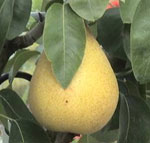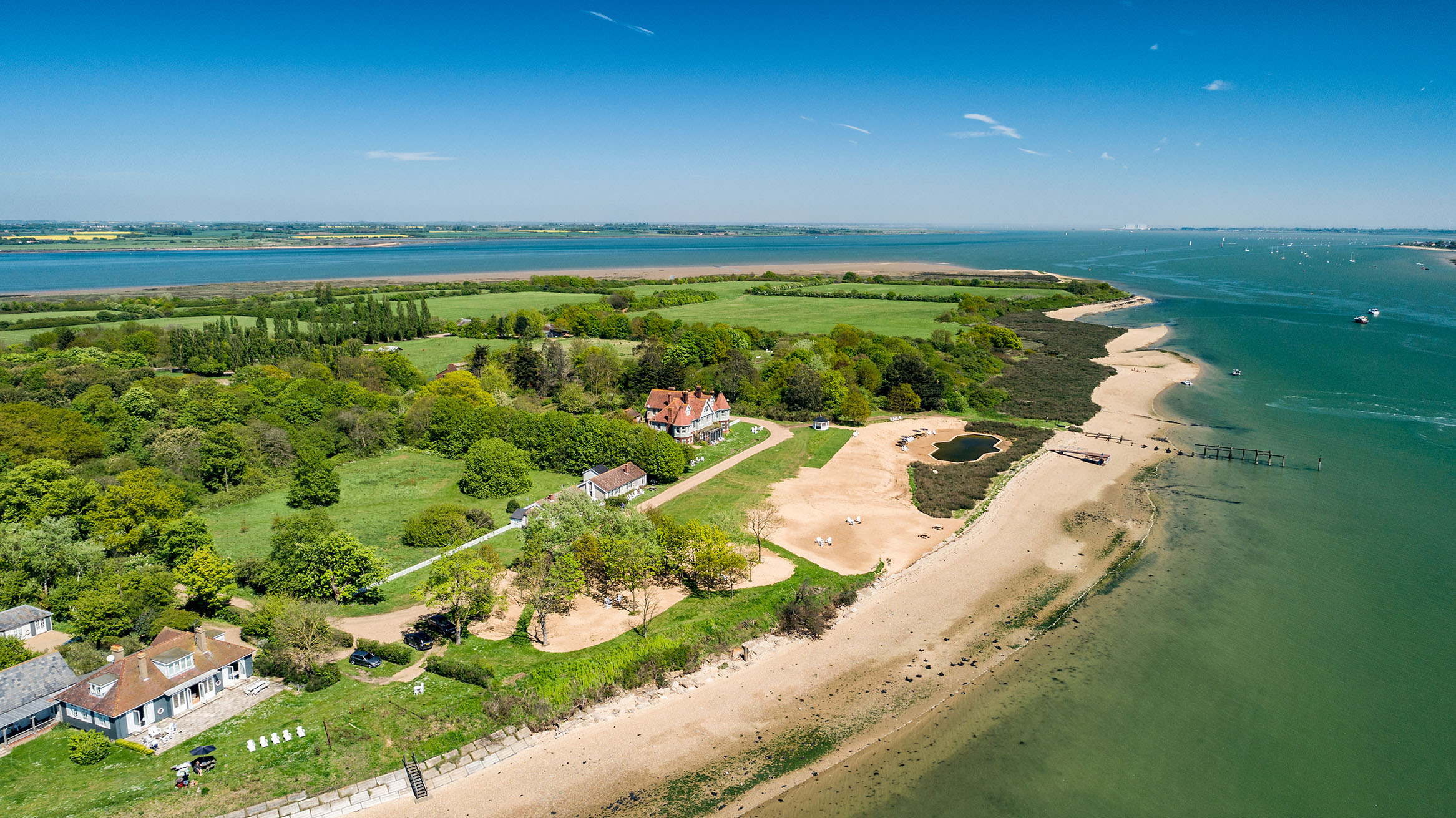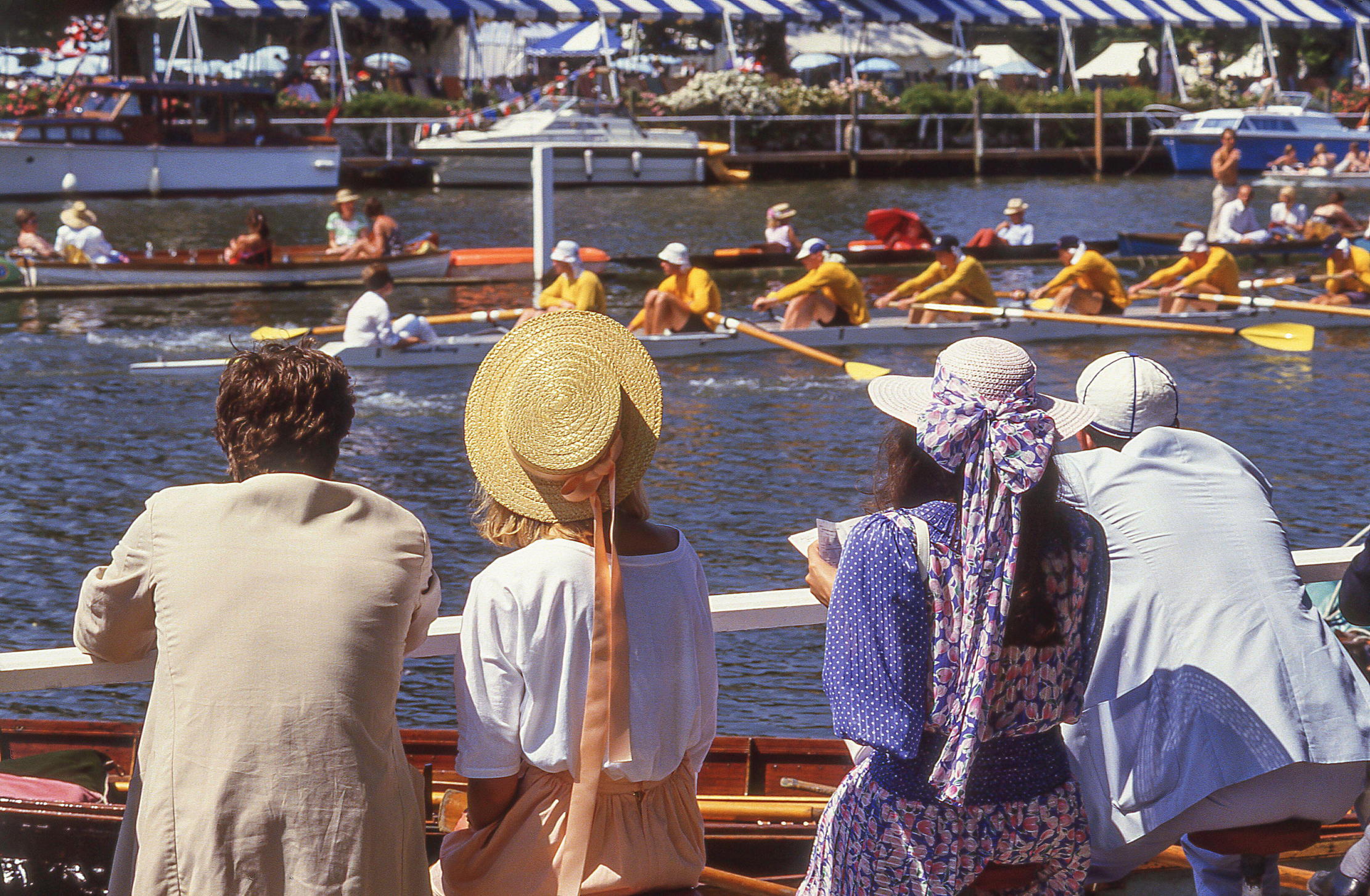Top tips on starting fruit orchards
A single pear and apple tree will supply a whole family with a season's worth of fruit. Garden designer Francoise Murat reveals her top tips for how to get started


I am often asked by clients about growing fruit in their garden: ‘Seems difficult'; ‘How do I prune them?', ‘We only have a small suburban garden - can we still have a selection of fruit trees?'; ‘I have a large garden - can I still have trained fruit trees?' The answer to all these questions is an emphatic ‘Yes'!
Orchards are usually grander affairs in large gardens, accommodating a greater number and a wider range of trees. But today, even the smallest of gardens can accommodate a pear and apple tree enough to supply a whole family with a season's worth of fruit. The trick is to select the right varieties and to engineer the way they grow. We all dream of having a large garden but today's frenetic and active lifestyles mean that we simply don't have the time. In reality most people have smaller plots so one has to approach fruit growing slightly differently.
Whether you live in a period house or a brand new build, fruit trees are rewarding not only because of their fruit, they are also highly ornamental and fit in with any style of house and garden. Even if your outside area is tiny you can still grow fruit trees in containers.
Fruit trees can be trained to be space saving whilst still being highly productive, and there is a huge variety of shapes to chose from: cordons, multiple cordons, step-overs, fans, bush, goblets, espaliers, pyramids....all are possible as long as they are grown on the correct rootstock. This will determine their final size.
Before you start heading to the nurseries or shops, consider a few things:
* The space you have available - containers might be the option for you, or consider planting along a fence where they can be trained in their restricted forms along wires and canes * The type of fruit you want to grow - apples, pears, apricots, cherries, etc. * The site - you will need a warm, sunny and sheltered site. South to south-west is the optimum * The soil - a well drained soil is best, at least 60cms deep with a pH of neutral or slightly acidic 6.5 is good. Extremely alkaline soil will stress your trees. You can get a test kit from most garden centres and nurseries For unrestricted forms, meaning larger trees in larger gardens, pruning is done in winter, whilst for restricted forms such as described above, pruning takes place in the summer. Oddly enough, restricted forms usually crop earlier than normal fruit trees and they are also more productive. This suits a smaller garden well, saving space whilst giving maximum yields.
Apples and pears are the easiest fruit trees to grow and perfectly suited to our climate. It is always best to ask a local specialist nursery as they will be able to recommend the best varieties for your area. It's also worth considering apricot, cherry and other more exotic fruit trees. The most important thing to remember is to buy a variety on a rootstock that is appropriate to your requirements. For example, with apples:
Sign up for the Country Life Newsletter
Exquisite houses, the beauty of Nature, and how to get the most from your life, straight to your inbox.
* For apple trees in pots try M26. This is a good rootstock for containerised fruit. * M27 rootstock will reach a height of 1.5m and is the smallest of all rootstocks. Great to grow as a step-over or as a bush. * M9 rootstock is the second smallest at 1.8 to 2m or so. Again, perfect for step-overs, cordons or as a small bush tree. * M26 is a good rootstock as it caters for all restricted forms such as espaliers, cordons, spindle bush (straight up), goblets, fans, etc. If you have a larger garden it is wise to ask an expert in fruit growing. The local fruit nursery will be invaluable in helping you plan the sizes required, which varieties to use and how far apart to plant them. If you want to have a restricted form for added ornamental value, go for a MM106 which will accommodate larger espaliered shapes, as well as spindles, fans etc.
For pears, rootstocks are grafted on to quince roots and there are two you need to be aware of: * Quince A to be used for espaliered and bush trees. * Quince C is suitable for cordons as it is less vigorous than the above, but I have used it for espaliers, cordons and bush trees too.
Cherry, Plum, Greengage, Apricot and Nectarines all have different rootstocks. Just ask the specialist nursery which is best for your garden taking into consideration your requirements and the site.
Planting space is important. When planting along a fence, for example, keep oblique cordons at least 60cms apart, espaliers at 4 metres, or the equivalent of two fence panels, same with a fan. As you can see, the oblique cordons are the best form to go for in a very small garden. Partially trained trees are available from specialist nurseries with 1-2 tiers of branches for espaliers, fans and pyramids.
Suggested varieties to get you started:
Apple: James Grieve as an oblique cordon - great tasting, green flushed with red, juicy and fresh to taste. Worcester Pearmain as an espalier - crisp, juicy, sweet taste.
Pear : Doyenne du Comice or Williams as espaliered - both buttery fresh and crisp taste.
For pots try these varieties:
Apple: Discovery or Falstaff are great for containers.
Pears: Concorde or Red Comice are easy to grow in pots.
For pruning and more information on fruit trees, have a look at the very easy guides produced by the RHS and their online advice pages here: http://apps.rhs.org.uk/advicesearch/
For specialist nurseries:
Ken Muir: http://www.kenmuir.co.uk/ - good range of partially trained fruit trees available. from late November until March.
Keeper's Nursery: http://www.keepers-nursery.co.uk/ - a good range of tree forms.
Chris Bowers & Sons: http://www.chrisbowers.co.uk/ - ready trained fruit trees.
Francoise Murat & Associates is a Garden, Landscape and Architectural interior design practice. The practice runs garden classes in how to grow your own fruit and vegetables. Francoise is running specialist workshops at the Georgian Society in September, October and November " Restoring period gardens".
Francoise Murat & Associates is a member of ProjectBook, which has been created to help owners of listed or period properties understand how their buildings work and to help them find appropriate craftsmen, products and specialist information. The online Heritage Register contains over 540 registered businesses, the largest directory of its type in the UK. For more information, visit www.projectbook.co.uk. Follow ProjectBook on Twitter
Country Life is unlike any other magazine: the only glossy weekly on the newsstand and the only magazine that has been guest-edited by HRH The King not once, but twice. It is a celebration of modern rural life and all its diverse joys and pleasures — that was first published in Queen Victoria's Diamond Jubilee year. Our eclectic mixture of witty and informative content — from the most up-to-date property news and commentary and a coveted glimpse inside some of the UK's best houses and gardens, to gardening, the arts and interior design, written by experts in their field — still cannot be found in print or online, anywhere else.
-
 380 acres and 90 bedrooms on the £25m private island being sold by one of Britain's top music producers
380 acres and 90 bedrooms on the £25m private island being sold by one of Britain's top music producersStormzy, Rihanna and the Rolling Stones are just a part of the story at Osea Island, a dot on the map in the seas off Essex.
By Lotte Brundle
-
 'A delicious chance to step back in time and bask in the best of Britain': An insider's guide to The Season
'A delicious chance to step back in time and bask in the best of Britain': An insider's guide to The SeasonHere's how to navigate this summer's top events in style, from those who know best.
By Madeleine Silver